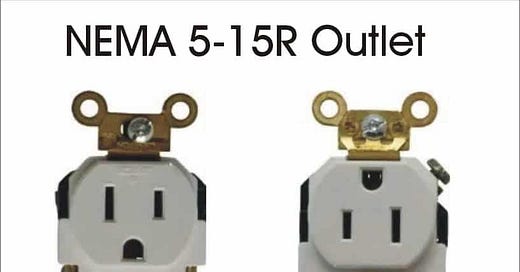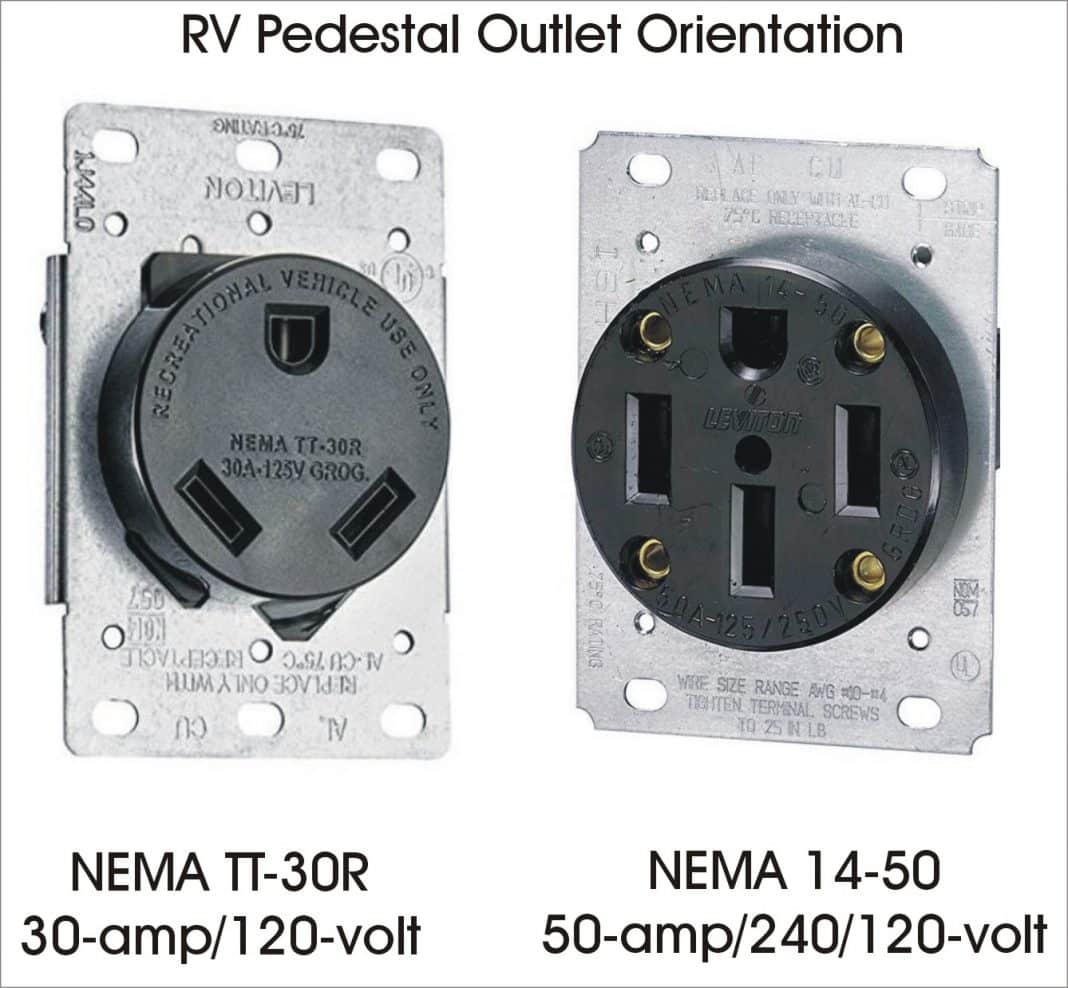Dear Mike,
I’ve encountered quite a few 15-amp outlets that were “upside down” with the ground at the top instead of the bottom. And it seems like this same upside-down orientation is what’s needed to plug in my shore power plug without it sticking up in the air. So is there a right or wrong way for outlets to be installed in your home? And is there a right or wrong way for pedestals to be installed at a campground? —Dizzy in Denver
Dear Dizzy,
To discuss this properly we first have to get in the groove with Diana Ross singing Upside Down.
All righty, everyone got your beats happening? Then here we go!
What about 15- and 20-amp outlets?
First of all let’s go over what the NFPA-70 National Electrical Code has to say about which way the 15- or 20-amp (Edison) outlet should be installed in your home. And guess what? They say NOTHING! That is, there’s no official code describing orientation of ground up or ground down in a home receptacle (outlet). Nada! Zip! Nanimonai!
Here’s what it looks like. On the left side of the picture we have what I’ll call the original USA orientation with the ground at the bottom, which for decades was accepted as the normal way we all installed electrical outlets. But on the right we have what’s commonly referred to as “California or Hospital Code” with the ground pin oriented at the top.
California/Hospital Code?
So what exactly is “California Code” and why did it happen? While this is steeped in lore, the story goes that a loose metal cover plate in a hospital fell down over the partially unplugged extension cord and shorted out the hot and neutral contacts. Something really bad happened (I’m not sure what) but it resulted in the California electrical inspectors requiring hospitals to flip the outlets so the ground pin is at the top. That way if a metal cover plate ever falls into the gap from a partially unplugged power cord, it will harmlessly ground itself, rather than shorting the hot and neutral which results in the circuit breaker tripping and the heart-lung machine (or whatever) shutting off.
I’m not making this up: It’s the generally accepted theory as to why this happened. But the Hospital Code is a real thing, and now you’ll find that many states have adopted California Code for hospitals and hotels. Yes, they can do that. Your state probably doesn’t care either way, but you’ll find that some electricians are simply installing all 15- and 20-amp outlets “ground up” since this is how many hotels are installing them.
UPDATE: Switched Outlets are now Upside-Down!
I was reminded by a few astute readers that hotels and residential electricians are now installing switched outlets upside down with the top half of the outlet controlled by a wall switch, and the bottom half always being powered on.
I also confirmed with one of my local electricians that all of the doctor’s offices and hospitals in the area are wired with the outlets oriented “ground up”.
What about 30- and 50-amp receptacles?
But which way do you want 30- and 50-amp outlets oriented in a campground – with the ground up or ground down? Well, campground code does suggest that ground up is the proper orientation simply because just about every RV surge protector, shore power cord, and dog-bone adapter has the ground pin at the top. If you orient the outlet with the ground at the bottom, the plug won’t hang straight down, sometimes pulling itself out of the outlet. I’ve even found a few campsites with the outlet turned sideways, and that’s nearly as bad.
Nope, every campground pedestal outlet should be installed with the ground at the top, NOT the bottom. If you find one with the ground at the bottom then tell them to reorient the receptacle or you’re not paying for the campsite until they fix it. And DO NOT do this yourself!
Let’s play safe out there…. Mike









The only problem I found with the ground up is that when you buy any sort of gadget, like a timer, Air freshner, they are oriented to for the ground down or those gadget will be up side down.
In all the houses in our community there are receptacles that are controlled by a wall switch. The receptacles that are switched are installed ground up to make it easier to identify. Top outlet is switched and bottom one is always hot.
I didn't learn this until after we had moved in and now I can't find some of the outlets since there's furniture in the way.